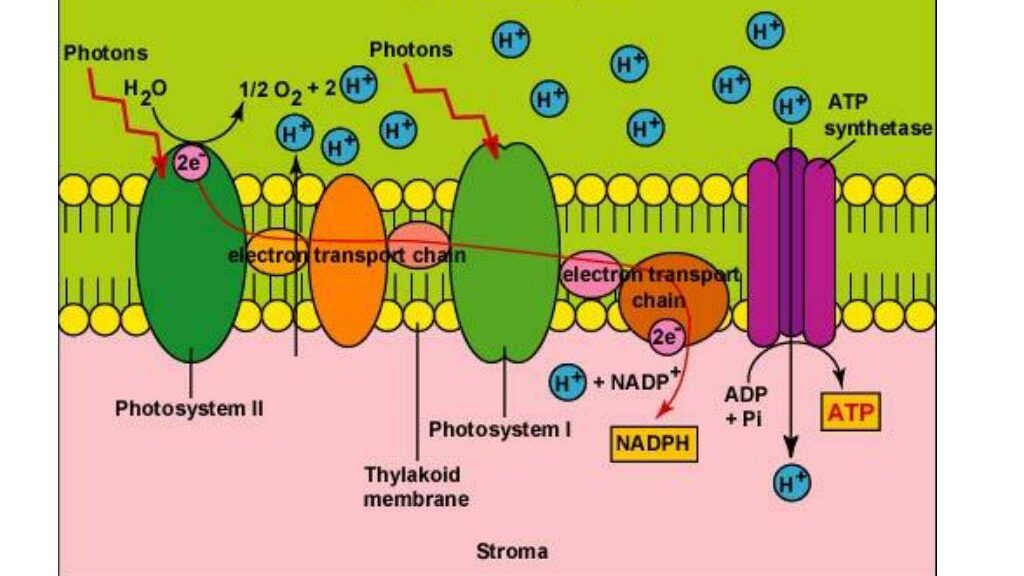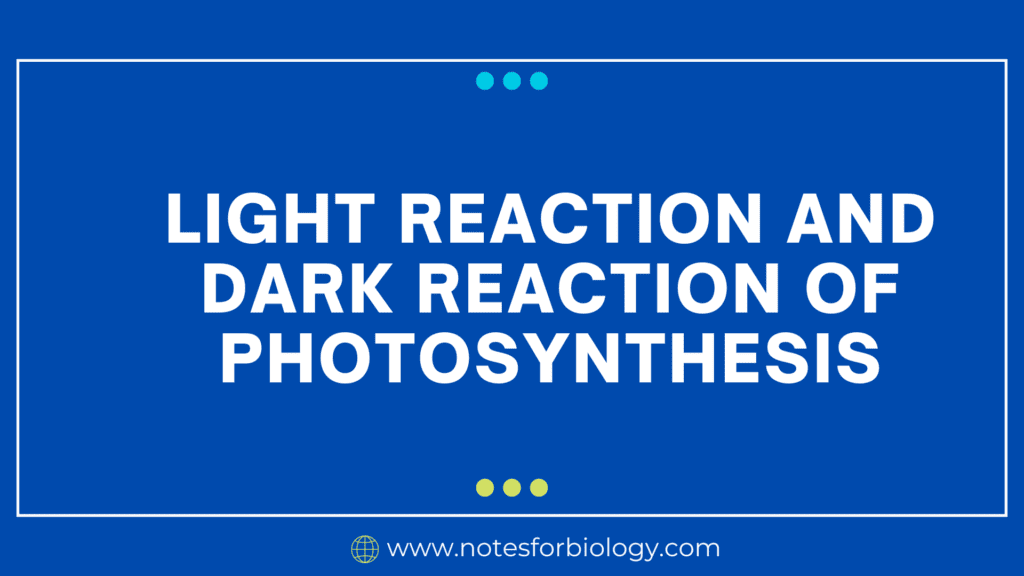Photosynthesis is the process that allows green plants to convert light energy into chemical energy. Light energy is gathered during this process and used to transform water, carbon dioxide, and minerals into organic compounds that possess high energy and oxygen. The significance of it for the preservation of life on Earth cannot be overstated. Food and other organic materials would quickly be scarce on Earth if this process stopped. Over time, the majority of creatures would vanish, and the atmosphere of Earth would eventually contain almost no gaseous oxygen. It generally shows two reactions. They are said as Light reactions and dark reactions.
Table of Contents
Light reaction

In the thylakoid membranes of plant cell chloroplasts, light responses occur. Thylakoids contain tightly organized clusters of enzymes and proteins labeled photosystems. Two of these systems work together to take electrons and hydrogens from water and move them to the cofactors ADP and NADP+. These photosystems acquired their names because of the order in which they were discovered, which is different from the order in which electrons flow through them. As the following picture shows, electrons excited by light energy must first transit through photosystem II and then photosystem I to make NADPH. ADP is changed into ATP by the protein ATP synthase by adding phosphate groups through the buildup of hydrogen atoms.
Dark reaction

Dark reaction is additionally known as a carbon-fixing reaction. Light is not necessary for the conversion of water molecules and carbon dioxide into sugar molecules. It occurs in the stroma of the chloroplast, which makes use of the results of the light reaction. Plants start the Calvin cycle by absorbing carbon dioxide from the atmosphere through their stomata. The ATP and NADPH generated during the light reaction, which transforms six molecules of carbon dioxide into one sugar molecule, glucose, power the Calvin cycle. It happens whether sunlight is present or not.
Difference between light reaction and dark reaction of photosynthesis
| Light reaction | Dark reaction |
| The initial stage of photosynthesis wherein solar light energy is transformed into chemical energy is said to be light reaction of photosynthesis. | The second stage of photosynthesis where CO2 is reduced to glucose by using the reducing power created during the light reaction is said to be dark reaction of photosynthesis. |
| It occurs in the grana region of the chloroplast. | It takes place in the chloroplast’s stroma. |
| ATP and NADPH + H+ are the two forms of chemical energy that are stored | During the light process, the reducing power ATP and NADPH + H+ were generated. |
Similarities between light and dark reactions of photosynthesis
Purpose and Integration
The whole process of photosynthesis, which transforms light energy into chemical energy stored in glucose, depends on both processes.
Location
The chloroplasts of plant cells are the site of both kinds of reactions. While dark reactions (the Calvin cycle) take place in the stroma of the chloroplasts, light reactions occur in the thylakoid membranes.
Enzyme Involvement
Enzymes help in the two sets of processes. Enzymes such as ATP synthase get involved in light processes, whereas Rubisco (ribulose-1,5-bisphosphate carboxylase/oxygenase) is involved in the Calvin cycle.
Interdependence
ATP and NADPH are produced by light reactions and are essential for the Calvin cycle to fix carbon dioxide into glucose. ADP and NADP+ are then renewed via the Calvin cycle and utilized again in the light reactions.
Functions in Energy Transformation
The transformation of light energy into chemical energy involves both processes. Dark processes use the chemical energy generated during the synthesis of glucose, whereas light reactions directly capture solar energy.
Frequently asked questions
What is the Light reaction of photosynthesis?
In the light reactions of photosynthesis, light energy is taken up by chlorophyll and
other pigments, transformed into chemical energy in the form of ATP and NADPH,
and oxygen is created as a consequence of the splitting of water molecules.
Define the dark reaction of photosynthesis.
The dark reactions in photosynthesis are a sequence of chemical events in the stroma
of chloroplasts that are catalyzed by enzymes. They convert carbon dioxide into organic
molecules like glucose by using the chemical energy that is stored in ATP and NADPH from
the light reactions.
What is the Calvin Cycle?
The Calvin cycle, often referred to as the Calvin-Benson cycle, is a sequence of chemical events
that takes place in photosynthetic organisms’ chloroplast stroma.
Related Article
Photosynthesis – Definition, Process, Stages with Importance

